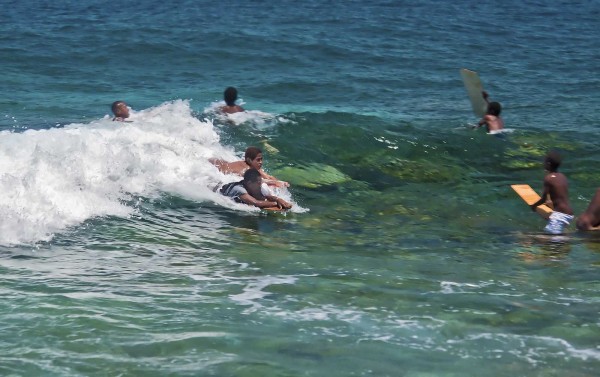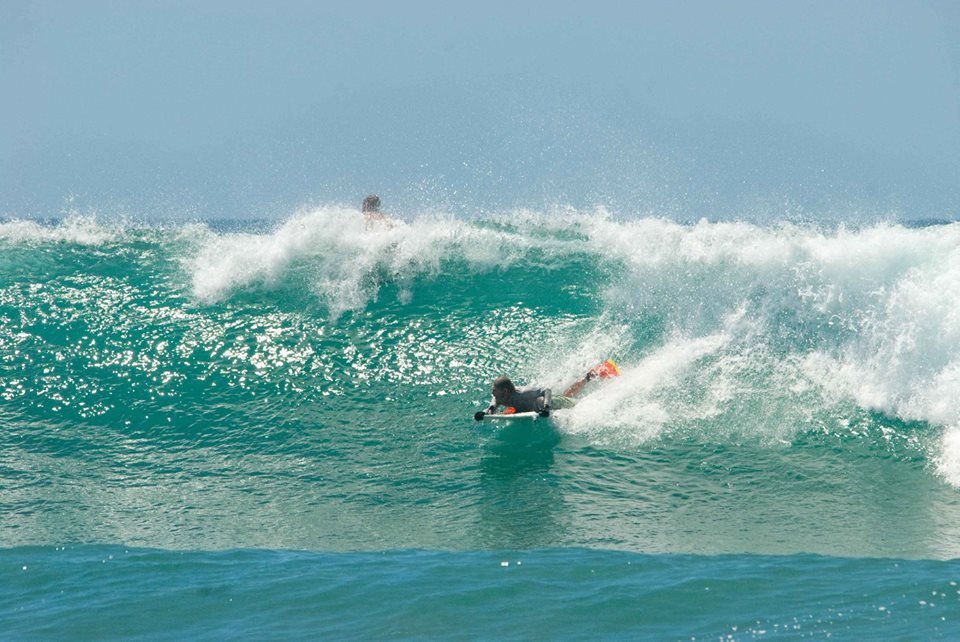by completing the
Paipo History Online Survey Form
| The history of riding waves prone on a rigid craft, such as a paipo
(or bellyboard) is largely undocumented. There is the occasional ride
in a late-1950s or 1960s surf movie, a long forgotten article in an old
or out-of-print magazine, a traveler's tales from the nineteenth
century, or snippets in surfing books. There are the occassional old
boards, photos and postcards. However, the details of who made the
boards, who owned and rode them, and the names of the surfers in the
photos are often unknown. There is another source of information which
we are hoping to tap into, namely the recollection of surfers and their
families or friends. The term paipo has been used broadly, to encompass kipapa-style (prone) surfing on a rigid craft, like a wooden paipo or alaia, as well as foam and fiberglass boards. This family of boards may be finless, or have one or more fins. These boards generally range from 3 to 5 feet long, but can be shorter or longer. For the purposes of this study we use the term paipo to include the entire family of rigid craft ridden upon kipapa-style, including bellyboards, lamaroo, and half-boards. We don't include soft bodyboards as paipo boards. We hope to incorporate personal recollections and knowledge about riding paipos into a document recording the history of paipo boards. What we are interested in are when and where you first saw paipo boards, your knowledge of people surfing paipo in your local area this includes the surfer's names, the boards ridden and who made these boards. Recollections from the distant past, the current day and the time in between are all parts of the puzzle. Many of the people who have contributed to the The Paipo Interviews have ridden other craft, including handboards, surf mats, bodyboards, kneeboards, or stand-up boards, but somewhere along the line have ridden or been involved with the manufacture of paipo boards. You can contribute by completing the form below which sends the information to Rod Rodgers, who with other Paipo Research Project collaborators will incorporate this into our shared history of the paipo. Copies of photos, suggestions regarding magazines, books or people to contact are welcomed. The Paipo History Online Survey Form Answer boxes should hold about 3 paragraphs of text. Please send an MS Word, or similar file, for more extensive responses. Your e-mail address is the only answer box requiring completion for submiting the Survey Form. Click on the survey form or one the images below. Mahalo!
Feel free to send suggestions for additions via e-mail to: The Paipo Research Project. |
||
|
Also see the Bibliography for Paipo Research and General Acknowledgments, Sources, Places, Citations, Contributors... |
||
|
Feel free to send me suggestions for additions to: The Paipo Research Project. |

